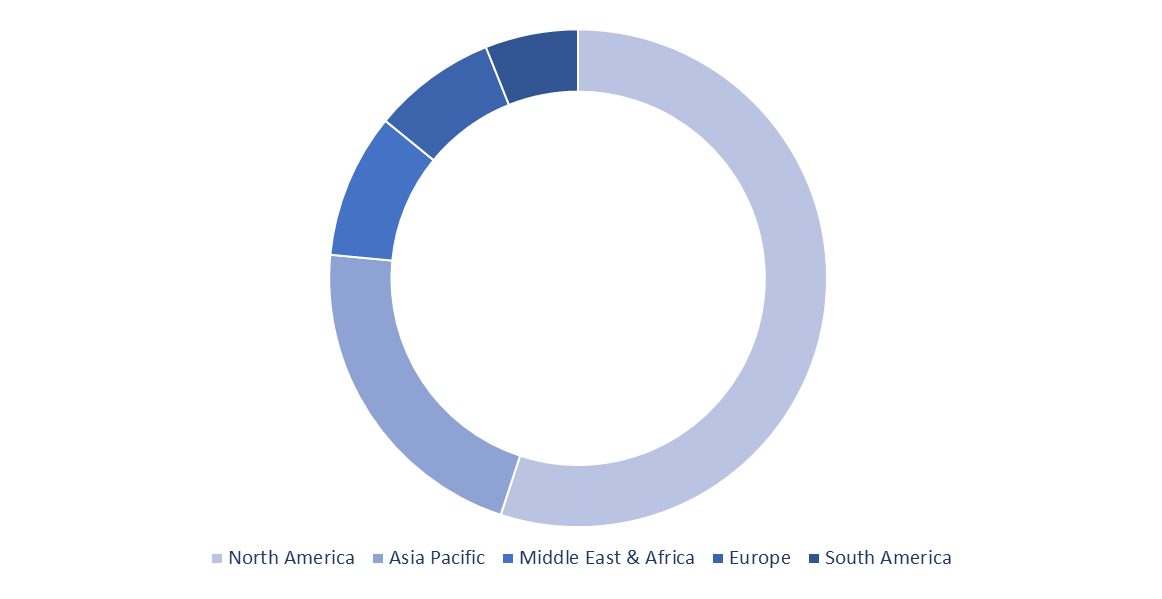The global nuclear imaging equipment market size was estimated to be US$ 3.65 billion in 2020 and is expected to reach US$ 5.9 billion by 2031 at a CAGR of 4.5%.
Nuclear imaging technique alludes to a non-intrusive, easy indicative assessment that permits specialists to analyze the ailment of patients.
To give pictures of how tissues and organs work, nuclear imaging uses radioisotopes that are embedded into the blood circulation system, gulped, or breathed in. Nuclear imaging innovation head ways have been displayed to give productive patient care to tumor diagnosis along with accuracy of imaging techniques for clinical preliminaries.
In 2019, Shimadzu Medical Systems conjointly with Midwestern State University to give clinical devices along a 10-year administration plan for the College through the Shimadzu School of Radiologic Sciences. Additionally, rising demand for information coordinated imaging models. It empowers picture handling and rebuilding, 3D picture creation, PC supported proof of medical issues, and the utilization of satisfactory quality control models. With the help of information, doctors can undoubtedly assess outputs to adequately notice the illness motility.
Cancers and tumors are liable for 1 of every 8 mortality internationally, according to the American Cancer Society. Additionally, the explicit rise in travels related to medical procedures, alongside the thriving lifestyle changes, are a portion of the factors influencing the development of the province during 2022-2032.
Expanding analytic applications for cardiovascular issues, progress from independent to hybrid modalities, and extending creation of nuclear imaging hardware because of mechanical advances are relied upon to drive market development during the forecast time.

Global Nuclear Imaging Equipment Market Value Share Analysis, by Geography (2021)
The report titled “Global Nuclear Imaging Equipment Market - Global Market Share, Trends, Analysis and Forecasts, 2023-2032”, wherein 2021 is the historic period, 2022 is the base year, and 2023 to 2032 is forecast period. Additionally, the study takes into consideration the competitive landscape, wherein the report would provide company overview and market outlook for leading players in the Global Nuclear Imaging Equipment Market.
Furthermore, the report would reflect the key developments, global & regional sales network, business strategies, research & development activities, employee strength, and key executive, for all the major players operating in the market.
The global Nuclear Imaging Equipment market is segmented based on type, application type, end user type and region. Based on type, the Nuclear Imaging Equipment market is segmented into SPECT Imaging Systems, PET Imaging Systems, Planar Scintigraphy Imaging Systems, and Others. Based on application type, the Nuclear Imaging Equipment market is segmented into Neurology, Oncology, Cardiology, Others. Based on End user type, the Nuclear Imaging Equipment market is segmented into Hospitals, Imaging Centers, Academic & Research Centers, Others.
Based on geography, the Global Nuclear Imaging Equipment Market is segmented into North America, Europe, Asia Pacific, Middle East & Africa, and South America. North America is sub-segmented into the United States, Canada, and Rest of North America. Europe is sub-segmented into Germany, United Kingdom, Italy, France, Spain, and Rest of Europe. Asia Pacific is sub-segmented into China, Japan, India, Australia, and Rest of Asia Pacific. Middle East & Africa is sub-segmented into Saudi Arabia, UAE, South Africa, and Rest of Middle East & Africa. South America is sub-segmented into Brazil and Rest of South America.
The research provides in-depth analysis of prominent players holding majority share of the global market with a focus on all operating business segment and would identify the segment of the company focusing on Global Nuclear Imaging Equipment Market. Further, market share of prominent companies in the Global Nuclear Imaging Equipment Market would also be estimated.
The study takes into consideration the key competitive information such as business strategy, product portfolio, key development, swot analysis, and research and development focus of all the Nuclear Imaging Equipment companies. The Global Nuclear Imaging Equipment Market study would take into consideration the participants engaged throughout the supply chain and value chain of the market, along with their contribution. Product portfolio would focus on all the products under the Nuclear Imaging Equipment business segment of the company. Similarly, the recent development section would focus on the latest developments of company such as strategic alliances and partnerships, merger and acquisition, new product launched and geographic expansion in the Global Nuclear Imaging Equipment Market.
The key players of the Global Nuclear Imaging Equipment Market are Siemens Healthineers, Koninklijke Philips N.V., GE Healthcare, Toshiba Medical Systems Corporation, Neusoft Medical Systems Co., Ltd., Mediso Medical Imaging Systems Co., Ltd., CMR Naviscan Corporation, Digirad Corporation, SurgiEye GmbH, and Positron Corporation, and others.
Global Nuclear Imaging Equipment Market Key Segments:
Based on Type
Based on Application Type
Based on End user Type
By Region
The global Nuclear Imaging Equipment market was worth US$ 5.9 billion in 2020.
The global Nuclear Imaging Equipment market is expected to register a CAGR of 4.5% by 2031.
Key Nuclear Imaging Equipment market players are Siemens Healthineers, Koninklijke Philips N.V., GE Healthcare, Toshiba Medical Systems Corporation, Neusoft Medical Systems Co. and others.
Based on type, the Nuclear Imaging Equipment market is segmented into SPECT Imaging Systems, PET Imaging Systems and Planar Scintigraphy Imaging Systems.
Copyright © 2025 Same Page Management Consulting Pvt. Ltd. (insightSLICE) | All Rights Reserved
